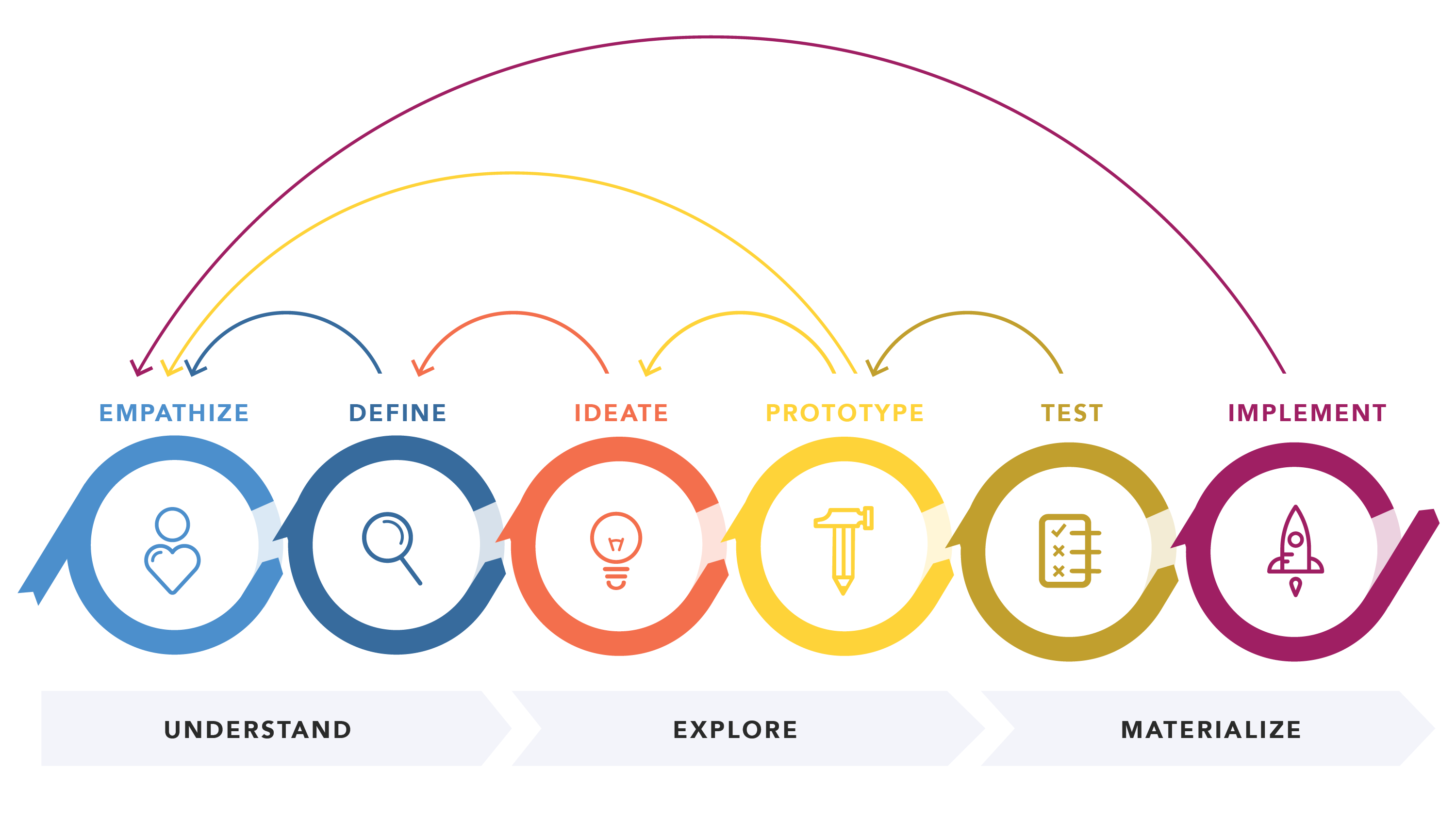DESIGN THINKING
aalphaa has contractual collaborations with top-notch design developers and consultants. We offer reliable support for design development and implementation in strategic business operations to yield tangible results. Our out of the box ideas have direct impact in economy.
We are implementing design thinking process in our all web portals to solve problems and to “make people’s life easy” which is the ultimate vision of Ametheus.

Design Thinking to solve problem:
Stage 1: Empathize — Research On Users’ Needs
Stage 2: Define — State Users’ Needs & Problems
Stage 3: Ideate — Challenge Assumptions & Create Ideas
Stage 4: Prototype — Start to Create Solutions
Stage 5: Test — Try Our Solutions Out
Stage 6: Implementation – Put the vision into effect.
Empathize
Imagine your goal is to improve an onboarding experience for new users. In this phase, you talk to a range of actual users. Directly observe what they do, how they think, and what they want, asking yourself things like ‘what motivates or discourages users?’ or ‘where do they experience frustration?’ The goal is to gather enough observations that you can truly begin to empathize with your users and their perspectives.
Define
Combine all your research and observe where your users’ problems exist. While pinpointing your users’ needs, begin to highlight opportunities for innovation.
Consider the onboarding example again. In the define phase, use the data gathered in the empathize phase to glean insights. Organize all your observations and draw parallels across your users’ current experiences. Is there a common pain point across many different users? Identify unmet user needs.
Ideate
Brainstorm a range of crazy, creative ideas that address the unmet user needs identified in the define phase. Give yourself and your team total freedom; no idea is too farfetched and quantity supersedes quality.
At this phase, bring your team members together and sketch out many different ideas. Then, have them share ideas with one another, mixing and remixing, building on others’ ideas.
Prototype
Build real, tactile representations for a subset of your ideas. The goal of this phase is to understand what components of your ideas work, and which do not. In this phase you begin to weigh the impact vs. feasibility of your ideas through feedback on your prototypes.
Make your ideas tactile. If it is a new landing page, draw out a wireframe and get feedback internally. Change it based on feedback, then prototype it again in quick and dirty code. Then, share it with another group of people.
Test
Return to your users for feedback. Ask yourself ‘Does this solution meet users’ needs?’ and ‘Has it improved how they feel, think, or do their tasks?’
Put your prototype in front of real customers and verify that it achieves your goals. Has the users’ perspective during onboarding improved? Does the new landing page increase time or money spent on your site? As you are executing your vision, continue to test along the way.
Implement
Put the vision into effect. Ensure that your solution is materialized and touches the lives of your end users.
This is the most important part of design thinking, but it is the one most often forgotten. We need to remember that, “we need more design doing.” Design thinking does not free you from the actual design doing. It’s not magic”.
“There’s no such thing as a creative type. As if creativity is a verb, a very time-consuming verb. It’s about taking an idea in your head, and transforming that idea into something real. And that’s always going to be a long and difficult process. If you’re doing it right, it’s going to feel like work.” – Milton Glaser
As impactful as design thinking can be for an organization, it only leads to true innovation if the vision is executed. The success of design thinking lies in its ability to transform an aspect of the end user’s life. This sixth step — implement — is crucial.
[email protected]
www.ametheus.com

